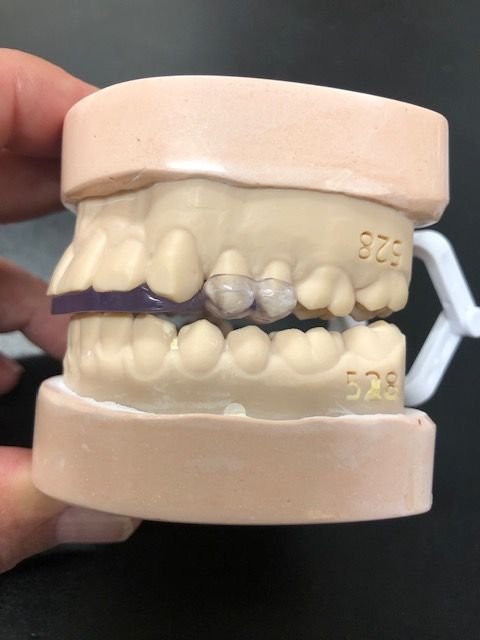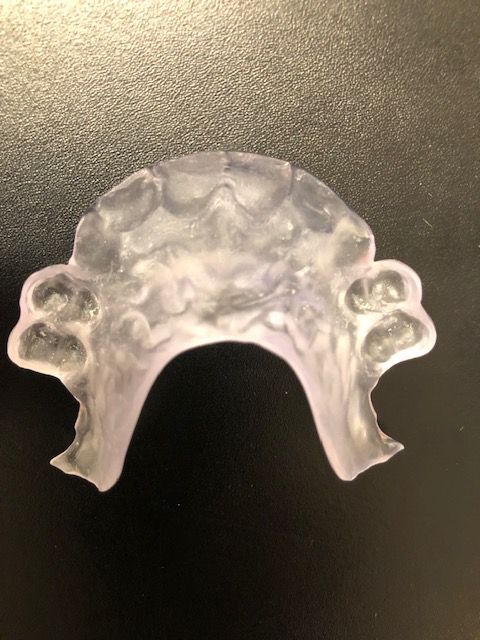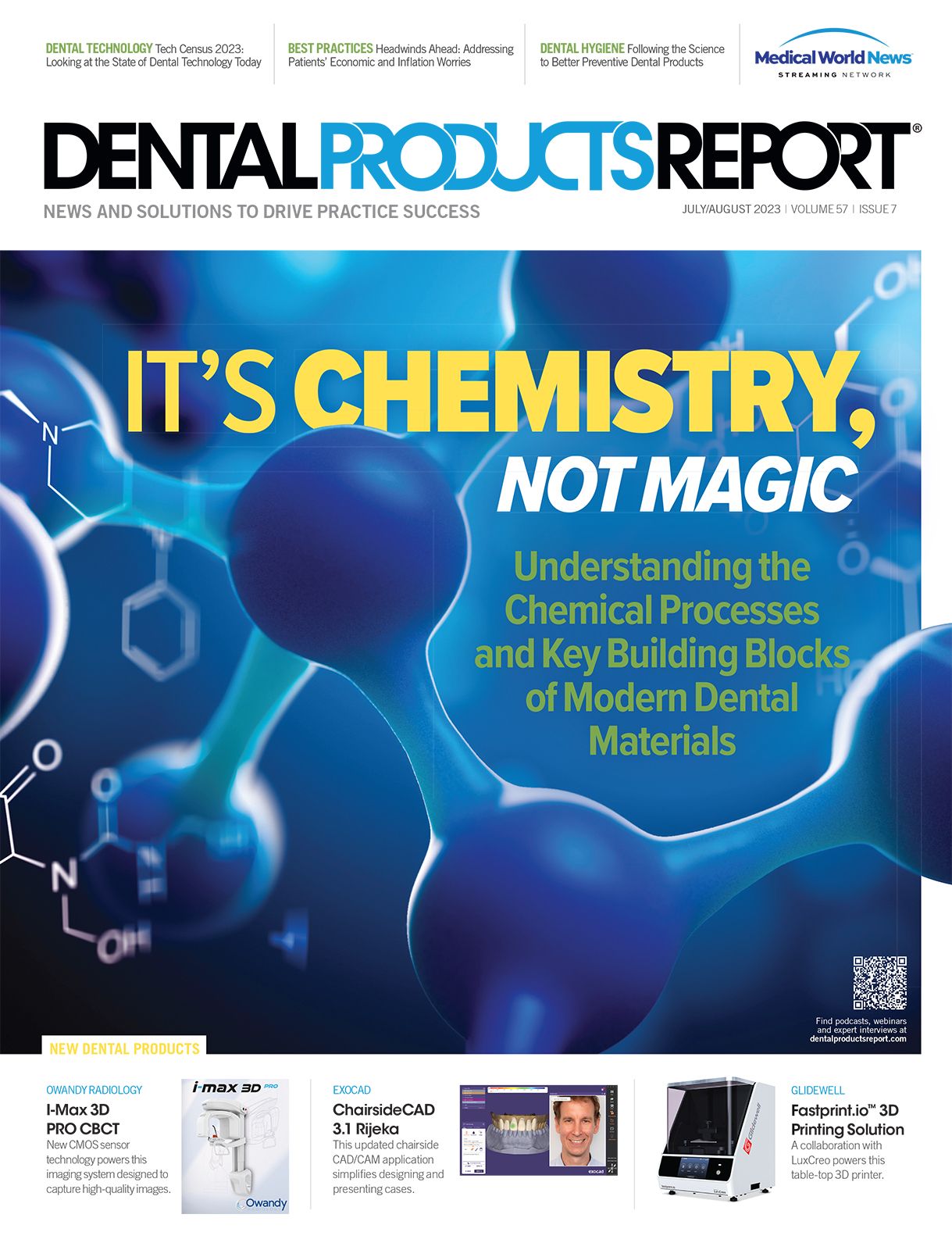Reducing Inflammation Is Key to Relieving TMD Symptoms
The Urbanek TMJ Device is designed to relieve the inflammation that causes temporomandibular disorder, and the results have been promising.

Temporomandibular disorder (TMD) is painful and frustrating, and patients are seeking relief. According to the National Institute of Dental and Craniofacial Research, approximately 11 to 12 million adults in the United States report pain in the region of the temporomandibular joint. TMD is twice as common in women as in men.1 There are a lot of methods to treat TMD, but unfortunately, many are not backed by science.
That means patients often spend a lot of time and money and still end up hurting. I spoke with Anthony P. Urbanek, DDS, MD, MS, who has dedicated his life to exploring and researching effective treatment for patients with TMD. He reports incredibly positive results with his Urbanek TMJ Device, which is designed to relieve the inflammation that causes TMD.
Lou Shuman (LS): Tell us about your background and experience.
Dr Anthony Urbanek (AU):I’m an oral maxillofacial surgeon in Nashville, Tennessee, for the past 43 years. I love research and have a dental degree from Indiana University, a master’s degree in cell biology and anatomy from Indiana University – [Purdue University] Indianapolis, and a medical degree from Vanderbilt [University]. I was a fellow with the National Institute of Dental and Craniofacial Research for 2 years. My early career focused on major facial reconstructions—orthognathic surgery, cleft palates, trauma, cancer reconstruction, and microneural procedures.
My interest in TMD increased as I performed about 2000 temporomandibular joint surgeries, both open joint and arthroscopic. Over those 30 years, too many patients would return with pain. I started researching and interviewing patients and encouraging them to tell me everything about their symptoms. I found a common thread. If the patient put their finger or pencil eraser between their front teeth, it would feel better. With that in mind, I created a device that went on the roof of the mouth behind the front teeth that patients could wear consistently, except for mealtimes. After using the device on patients with various symptoms, at an average of 3 weeks, [I noted that] roughly 70% of their symptoms were diminished or gone if they followed the protocol. Some of these patients had [experienced] 20 years of headache, earache, [and] jaw and neck pain.
LS: What are the main symptoms this device can help with
AU: There are 4 main indicators:
1. Frequent and recurring headaches
2. Neck, upper back, and shoulder pain
3. Pain in and around the temporomandibular joint (ear pain or jaw pain radiating in and around the temporomandibular joint)
4. Dizziness or ringing and fullness in the ears.
LS: What happens during “the Urbanek exam?”
AU: First, measure the interincisal distance. Are there limitations on opening?
Second, use your finger to put pressure on the coronoid process. Move up toward the joint—everyone who has TMD will basically jump off the chair.
Number 3 is looking for exostoses—mandibular tori, palatal tori, and maxillary or mandibular exostoses on the lateral part of the jaw. Exostoses proves that they brux (which is a component of TMD).
Next, ask the patient to open as wide as they can. On the outside of the patient’s face, place your fingers firmly in the depression where the condyle comes out of the glenoid fossa. Press firmly in the glenoid fossa, and ask them to bite as rapidly as they can into occlusion. If there is inflammation in the joint, they are going to feel some pain.
If the patient has these symptoms, the exam is positive.
LS: If the patient has exhibited the symptoms, what next?
AU: Armed with the information, the dentist needs to educate the patient and explain that inflammation within the temporomandibular joint will cause all these symptoms.
Then, explain that the way to relieve the inflammation that is causing the pain is [with] the Urbanek appliance.
LS: How does the Urbanek appliance work?
AU: The device, customized to each patient, unloads the joint just like a set of crutches unloads an inflamed knee. The patient starts by wearing the device 24/7 for 2 months, and then at nighttime only for the rest of their life. That works for about 85% of the patients. We have completed 4000 patient cases with a success rate of 95%, [which indicates what can happen] if they follow the protocol.
After using the device on patients with various symptoms, at an average of 3 weeks, the author noted roughly 70% of their symptoms were diminished or gone if they followed the protocol.

LS: How can a dentist learn the Urbanek method?
AU: Dentists can take the 2.5-hour online course to [be] successful and safe with the basics of the method. After listening to the whole course and taking a short test for CE [continuing education] credits and certification, they receive certification to use the device. Also included is a package to promote and educate their patients and referrals on this life-changing TMD treatment, and of course, personalized customer support.
Conclusion
The goal of every innovator is to teach, educate, influence, and impact. The goal of every practitioner is to improve the quality of life of our patients. Practitioners are echoing the patient success that Dr Urbanek describes. Kevin Stoller, DMD, of Simpsonville, South Carolina, says, “This device has successfully eliminated the TMD-related symptoms of my patients who have been suffering for years.” Brittany Westerman, DMD, of Florence, Alabama, concurs: “There is no better feeling than eliminating the pain that my TMD patients struggle with.” Even though researching and finding treatment for TMD has been a rocky road, it is refreshing to see someone who has approached this condition with Dr Urbanek’s level of professionalism.
For more information about the Urbanek TMJ Device and Protocol, visit UrbanekTMJ.com.
References
1. TMD (temporomandibular disorders). National Institute of Dental and Craniofacial Research. Updated March 2023. Accessed June 6, 2023. https://www.nidcr.nih.gov/health-info/tmd

ACTIVA BioACTIVE Bulk Flow Marks Pulpdent’s First Major Product Release in 4 Years
December 12th 2024Next-generation bulk-fill dental restorative raises the standard of care for bulk-fill procedures by providing natural remineralization support, while also overcoming current bulk-fill limitations.